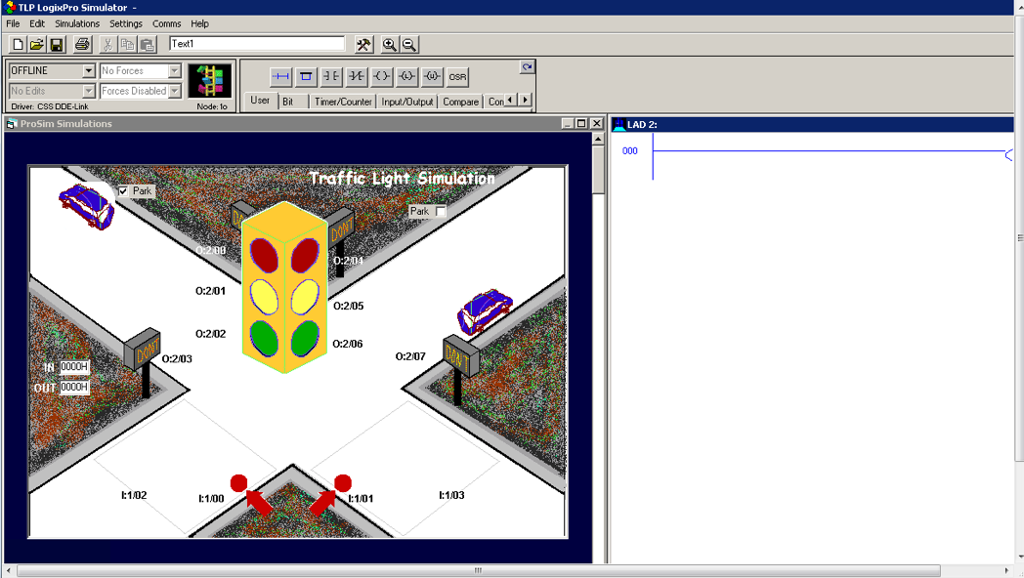

The two input cards are addressed as "I:1" and "I:3" while the output cards are addressed "O:2" and "O:4". Likewise two groups of 16 Lights are connected to two output cards of our PLC. Two groups of 16 toggle switches are shown connected to 2 Input cards of our simulated PLC. For this exercise we will be using the I/O simulator section, which consists of 32 switches and lights. The simulator screen shown above, should now be in view. Now maximize the ProSim-II Simulation Windowįile://C:\Program%20Files\TheLearningPit\LogixPro\doc\nrl\intro-rl.html Just click on "OK" to accept the default TLP LogixPro selection. A dialog box will appear asking for you to select a Processor Type. If your program is not empty, then click on the File menu entry at the top of the screen and select "New" from the drop-down list. If this is the only rung visible then your program is currently empty.

This is the End of Program rung and is always the last rung in any program. The program editing window should contain a single rung. This exercise is designed to familiarize you with the operation of LogixPro and to step you through the process of creating, editing and testing simple PLC programs utilizing the Relay Logic Instructions supported by RSLogix.įrom the Simulations Menu at the top of the screen, Select the I/O Simulation and ensure that the User Instruction Bar shown above is visible. Now maximize the ProSim-II Simulation Window Pa g e 1 of 7 Lo g ixPro Rela y Lo g ic Lab file://C:\Pro g ram%20Files\TheLearnin g Pit\Lo g ixPro\doc\nrl\intro-rl.html


From the Simulations Menu at the top of the screen, Select the I/O Simulation and ensure that the User Instruction Bar shown above is visible. LogixPro Relay Logic Introductory Lab RSLogix Relay Logic Instructions This exercise is designed to familiarize you with the operation of LogixPro and to step you through the process of creating, editing and testing simple PLC programs utilizing the Relay Logic Instructions supported by RSLogix.


 0 kommentar(er)
0 kommentar(er)
